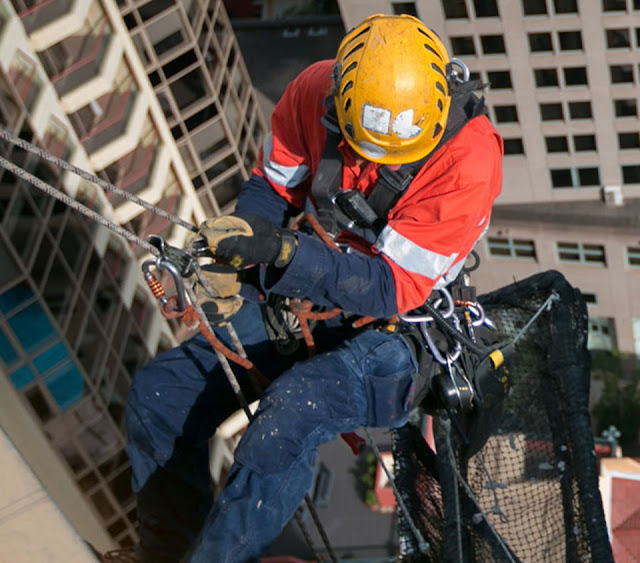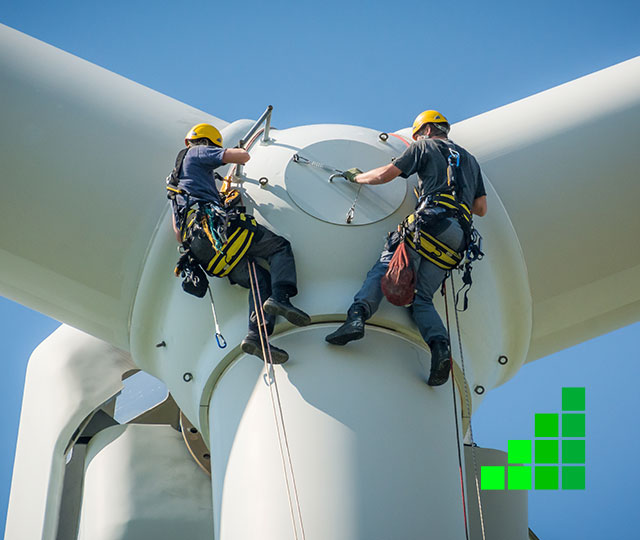7 Safety Measures To Follow During Abseiling Building Maintenance
Maintaining buildings, especially those in high-rise settings, often requires unique techniques to access hard-to-reach areas. Abseiling, also known as rappelling, is an essential practice in building maintenance that allows professionals to work safely and efficiently at heights. However, abseiling comes with its own set of risks and challenges. In this blog post, we will discuss 7 crucial safety measures to follow during abseiling building maintenance, ensuring the well-being of workers and the successful completion of projects.

Comprehensive Training and Certification
Before engaging in abseiling building maintenance, it is essential for workers to undergo comprehensive training specific to this field. Training programs should cover essential skills such as rope handling, anchor point setup, rescue techniques, and equipment usage. Additionally, certification from recognised authorities validates a worker's competence and ensures adherence to safety standards.
Thorough Risk Assessment and Planning
Every abseiling project should begin with a thorough risk assessment and planning phase. Evaluate the building structure, identify potential hazards, assess environmental conditions, and formulate appropriate safety procedures. Engage with experts who can provide insights into the specifics of the building and help develop a customised plan for safe abseiling operations.
Proper Equipment and Gear
Using high-quality and appropriate equipment is paramount in ensuring the safety of abseiling building maintenance. Inspect ropes, harnesses, carabiners, helmets, and other gear regularly to detect any signs of wear and tear. Each worker must wear a properly fitted harness and helmet, using tested and approved equipment to minimise the risk of accidents.
Secure Anchor Points and Rigging
Anchor points and rigging systems are critical components in abseiling safety. Ensure that anchor points are stable and securely attached to the building structure. Use properly rated and tested anchor systems and follow manufacturer guidelines for installation and usage. Rigging should be redundant, utilising multiple anchor points and backup systems as a precaution.
Regular Inspection and Maintenance
Maintaining the entire abseiling system is crucial for safe operations. Regularly inspect ropes, harnesses, and all gear for any signs of wear, damage, or aging. Follow manufacturer recommendations for equipment inspection intervals and retire any gear that no longer meets safety standards. Create a maintenance schedule to ensure timely replacement of worn-out gear.
Fall Protection Systems
Implementing reliable fall protection systems adds an extra layer of safety during abseiling building maintenance. Use lanyards, self-retracting lifelines, and fall arrest systems to safeguard workers in case of accidental slips or falls. Conduct thorough training on fall protection equipment and ensure workers understand proper usage and limitations.
Adherence to Weather Conditions
Weather conditions play a significant role in abseiling safety. Avoid working during high winds, storms, or adverse weather conditions that may compromise worker safety. Monitor weather forecasts regularly and reschedule operations if necessary. Establish clear protocols to suspend work or evacuate in the event of sudden weather changes.
Conclusion
Safety should always be the top concern when it comes to abseiling building maintenance. By following the outlined safety measures, workers can minimise risks and ensure their well-being while carrying out maintenance tasks. Proper training, thorough planning, regular equipment inspection, and effective communication are crucial elements in maintaining a safe work environment. By prioritising safety, we can make abseiling building maintenance not just efficient, but also secure for everyone involved.
Remember, safety is the foundation for successful abseiling building maintenance projects!
Source From: 7 Safety Measures To Follow During Abseiling Building Maintenance


Comments
Post a Comment